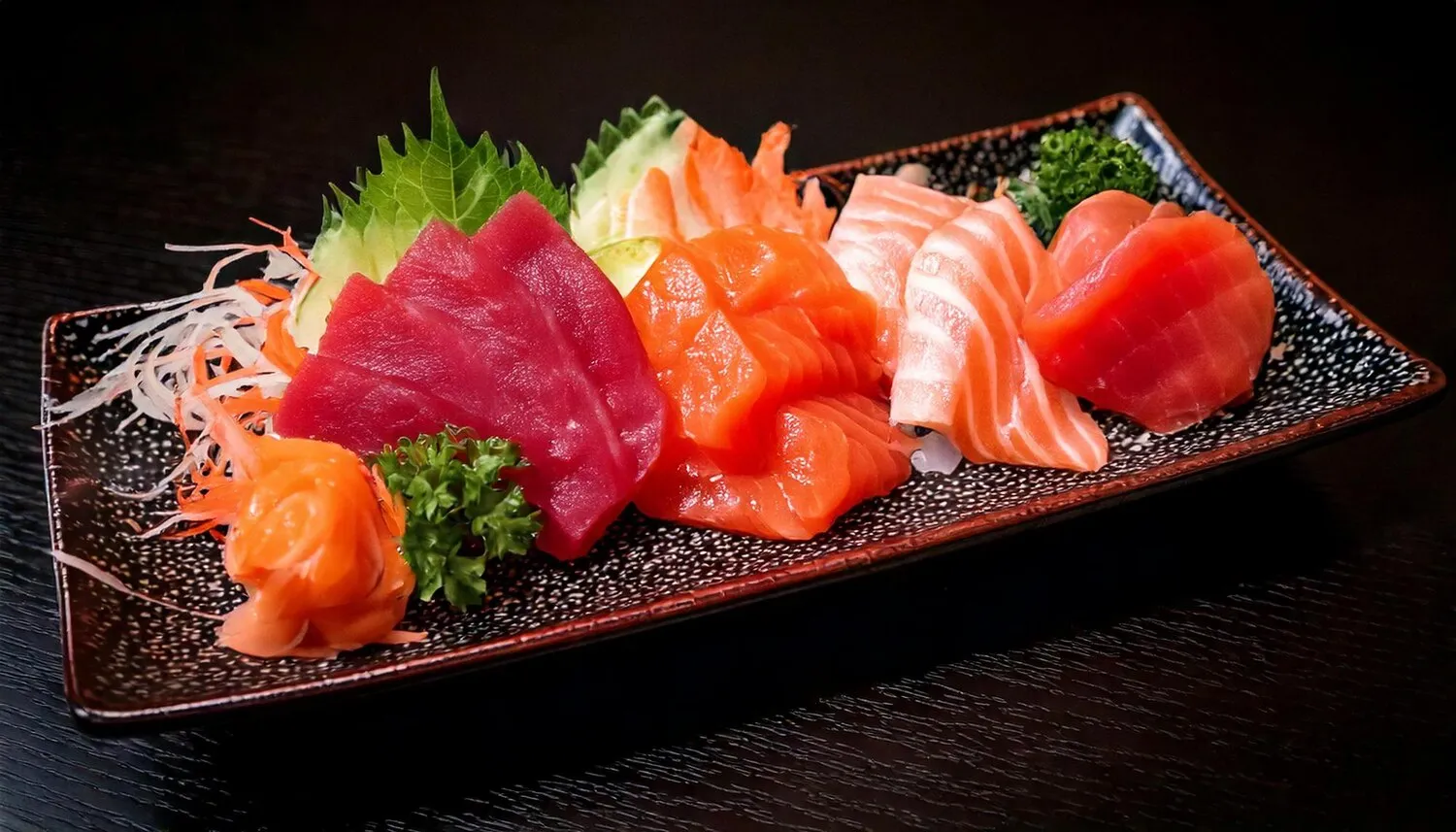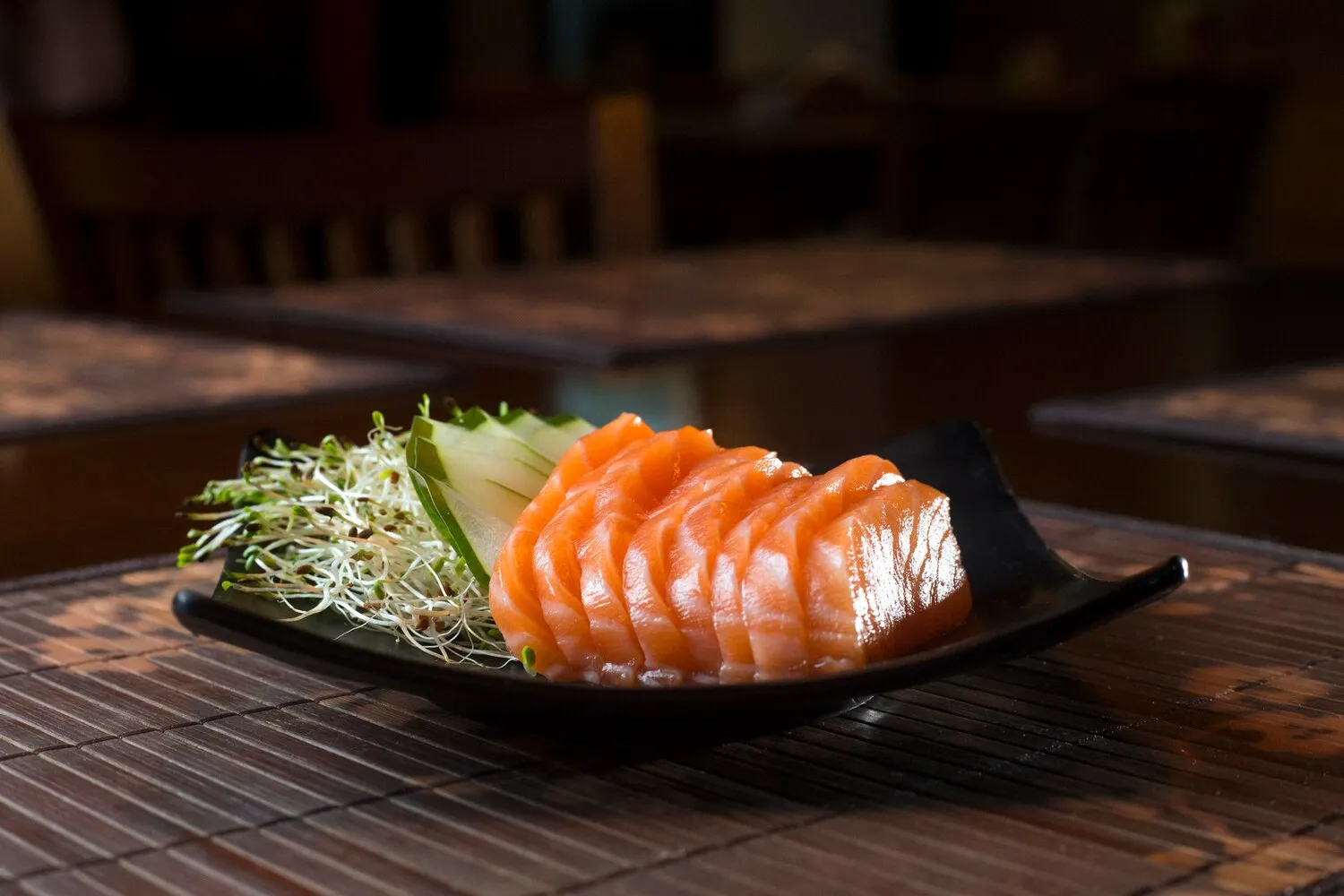
Sashimi
Fresh slices of raw fish.
Nutrition Facts
* The % Daily Value (DV) tells you how much a nutrient in a serving of food contributes to a daily diet. 2,000 calories a day is used for general nutrition advice.
Toyamah Sushi
The practice of eating raw fish in Japan dates back centuries, possibly originating as a necessity for preserving food before refrigeration. While the exact origins are debated, its evolution into the refined art form we know as sashimi is tied to advancements in fishing techniques, knife skills, and an increasing appreciation for the natural flavors of high-quality fish.
Sashimi is more than just raw fish; it is a culinary art form in Japan, reflecting a deep respect for the ocean and the natural ingredients it provides. The presentation, knife skills, and the overall dining experience are all carefully considered.
Presentation is Key
The arrangement of sashimi on the plate is meticulously planned to showcase the colors and textures of the fish, creating a visually appealing experience. Garnishes like shiso leaves, daikon radish, and seaweed are often used for both aesthetic and flavor purposes.
Knife Skills
Sashimi preparation requires exceptional knife skills. Different cuts are used for different types of fish, each designed to maximize the flavor and texture. Precise cuts are essential to avoid damaging the delicate fibers of the fish.
Freshness and Quality
The freshness and quality of the fish are paramount. Sashimi-grade fish must be handled with extreme care to prevent spoilage and ensure safety. Many restaurants source their fish daily from local markets or trusted suppliers.
Sashimi offers a delicate and clean taste, emphasizing the natural flavor and texture of the fish. The flavors are subtle, fresh, and often described as umami.
The specific flavor profile depends heavily on the type of fish used. Tuna, for instance, can range from buttery and mild (bluefin) to slightly tangy and rich (yellowfin). Salmon offers a fattier, more pronounced flavor. White fish, like sea bream or fluke, are typically milder and cleaner. Wasabi and soy sauce, served as condiments, enhance the flavors – the wasabi adding a pungent kick, and the soy sauce providing saltiness and umami. Ginger acts as a palate cleanser between different types of sashimi.
Wasabi Usage
Apply a small amount of wasabi directly to the fish, rather than mixing it into the soy sauce. This allows you to control the intensity of the spice and appreciate the flavor of the fish without overpowering it.
Soy Sauce Dipping
Dip only the edge of the sashimi into the soy sauce, as excessive soy sauce can mask the natural flavors of the fish. The goal is to complement, not overwhelm, the taste.
Order of Consumption
Start with the lighter-flavored fish, such as white fish, and gradually move to the richer and fattier fish, like tuna or salmon. This allows you to fully appreciate the subtle differences in flavor.
Explore additional Sashimi dishes and restaurants
Explore SashimiDiscover top dining spots and culinary experiences in Paris.
Explore ParisLearn more about the food culture, restaurant scene, and culinary heritage of France.
Explore France
